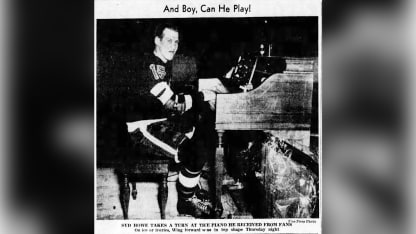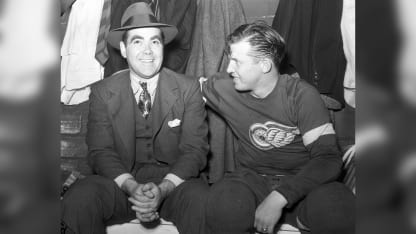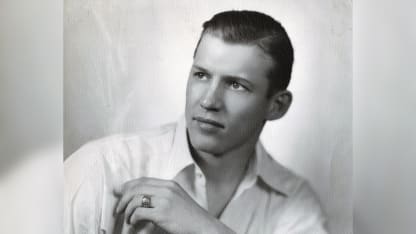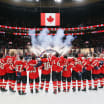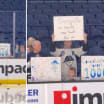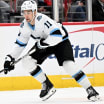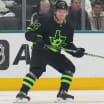Legendary hockey reporter Stan Fischler writes a weekly scrapbook for NHL.com. Fischler, known as "The Hockey Maven," shares his humor and insight with readers every Wednesday.
This week goes back eight decades to a night when a grand piano was wheeled to center ice. A member of the Detroit Red Wings then played it, went on to score two goals and win the game and continued to set NHL records.
It was Jan. 29, 1942, exactly 83 years ago today, that a once-in-a-lifetime event took place at Detroit Olympia, where the Chicago Black Hawks played the Detroit Red Wings, but the game had to wait.
Sitting in front of a grand piano at center ice in full uniform and skates was Red Wings forward and future Hockey Hall of Famer Syd Howe. To the delight of 7,164 fans, Howe played "Bye Bye Blackbird" by Jerome H. Remick, a hit tune from 1926. It was the piece de resistance on "Syd Howe Night" and the press loved it.
"In a pregame ceremony the hockey virtues of the Red Wings star were extolled by numerous admirers," wrote Doug Vaughan in The Windsor Star. "Howe was the recipient of many handsome expensive gifts. But when asked which present he most wanted, he requested a spinet piano."
He also received a War Bond, desk set, toolbox, set of silver hurricane lamps and a suit of clothes, among other gifts.
"The piano surprised everybody," Red Wings publicist Fred A. Huber later told me. "It actually was bought from dimes sent in by fans who considered Syd a great hockey hero."
